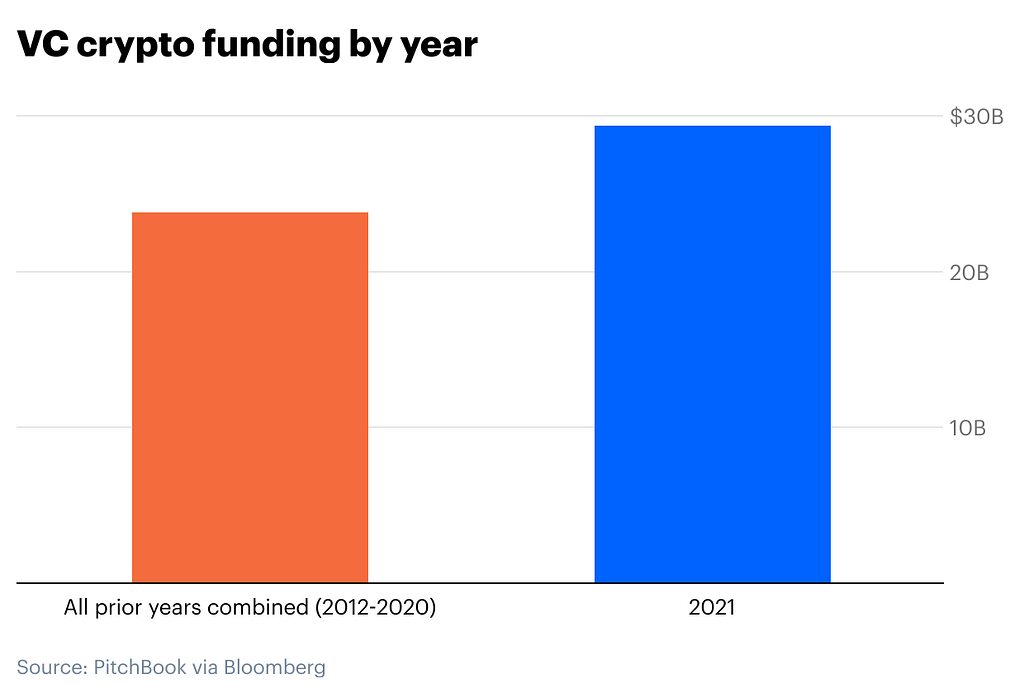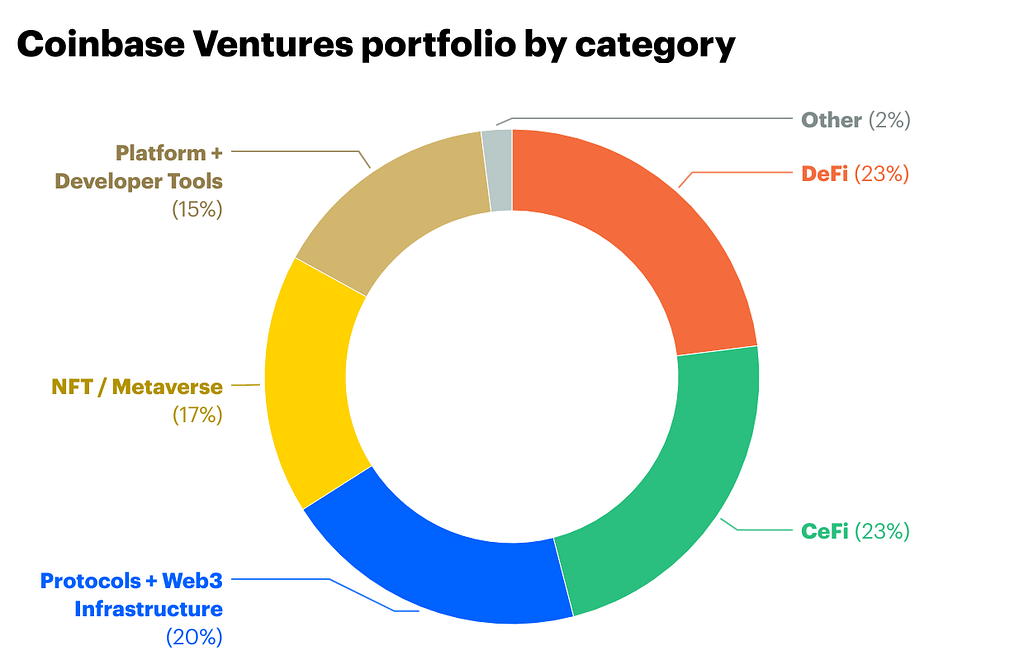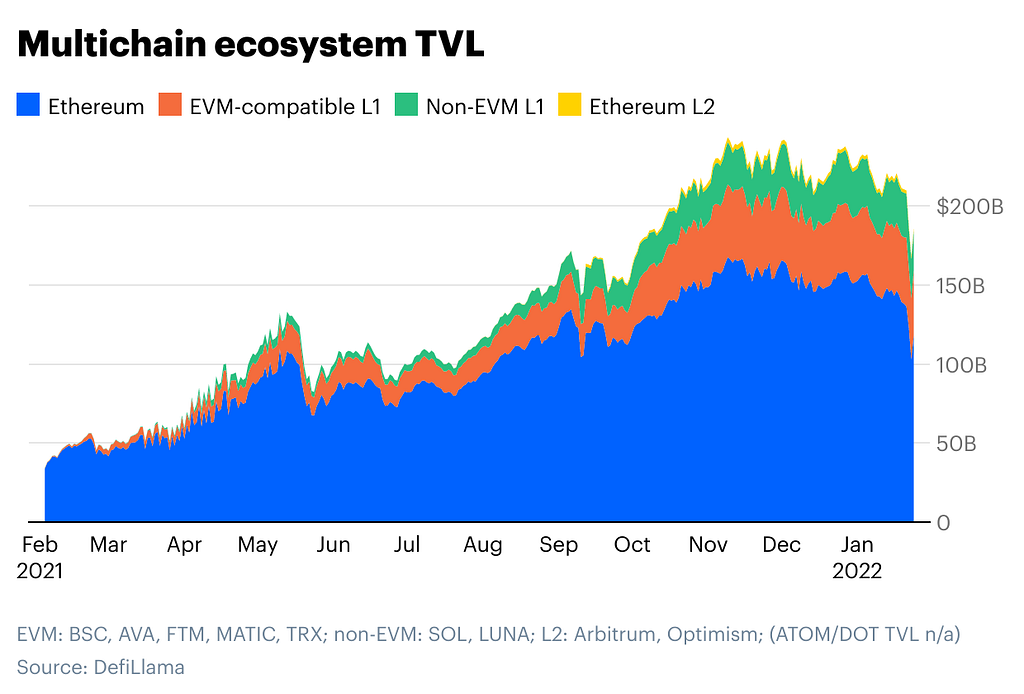Coinbase Ventures summarized the investment logic and projects of 2021: about 150 transactions, with the most in the CeFi category
Source: Coinbase Blog
Compiled by: Gu Yu, Chain Catcher
2021 was a historic year for both the crypto market and venture capital. Driven by institutional capital inflows, Bitcoin surged to new highs at the beginning of the year, and the entire market approached a record $3 trillion market cap in November. Meanwhile, $30 billion in venture capital flooded into the space: more than the total of all previous years in cryptocurrency history combined.
2021 was also a record year for Coinbase Ventures, with total transactions nearing 150, averaging a new deal every 2.5 days. Since the beginning of 2021, over 90% of the capital from Coinbase Ventures has been deployed, reflecting an accelerated pace of activity in our fourth year of operation.
Coinbase Ventures is one of the most active corporate venture funds in the industry, with a mission to increase global economic freedom by supporting leading entrepreneurs and projects in the ecosystem. Ultimately, we view cryptocurrency and Web3 as a rising tide that lifts all boats, including Coinbase, and Coinbase Ventures is committed to making investments that are critical to the overall growth of the space.
In this article, we will look ahead through the lens of Coinbase Ventures' activities in 2021.
Transactions by Type
The Coinbase Ventures portfolio now consists of over 250 companies, broadly categorized into the following verticals.
Let’s break down this pie chart piece by piece.
Protocols and Web3 Infrastructure
In 2021, cryptocurrency reached new heights in practicality, particularly in the emerging "Web3" space, which we generally consider a trustless, permissionless, and decentralized internet leveraging blockchain technology: essentially, the pipeline that underpins everything from DeFi, NFTs, Metaverses, and DAOs. At the bottom of the Web3 stack are the Layer 1 protocols led by Ethereum, but in 2021, Web3 began to expand to other Layer 1 blockchains such as Solana, Polygon, Avalanche, Terra, Flow, and others.
To help scale existing Layer 1s and achieve higher throughput, we support Layer 2 solutions, including Matter Labs, Optimism, and Arbitrum. As Layer 1 blockchains surged, the demand for secure and easy cross-chain fund transfers also increased. Therefore, Ventures actively invested in projects that facilitate this cross-chain movement, including Biconomy, Movr, LayerZero, Chainflip, and others. We also observed and funded new protocols bringing better privacy to Web3 through various zero-knowledge solutions (Aleo, MobileCoin, and another pending project).
We are also active in the infrastructure layer of the Web3 stack: the primitives that make up the backbone of user applications. Specifically, technologies introducing data storage (Arweave), messaging (XMTP), and identity standards (Spruce) for Web3. Given that 2021 was a fruitful year for DAOs, we actively participated in infrastructure projects focused on supporting DAO creation/merging (Syndicate, Utopia), discovery/participation (Snapshot/Consensys' Metamask), payroll/operations (Diagonal), and coordination (Orca).
Given the investments made over the past year, we expect Web3 to mature across multiple Layer 1 and Layer 2 ecosystems in 2022, with user experiences more akin to Web2 applications. Additionally, we anticipate that DAOs will continue to thrive in the coming year, along with better privacy features for Web3 applications.
Decentralized Finance
While 2021 hinted at the future of Web3 activity occurring across multiple Layer 1 and Layer 2 platforms, DeFi activity began migrating this year. Much of this activity occurred on EVM-compatible chains (Avalanche, Polygon, BSC, etc.) and Layer 2 environments (Arbitrum, Optimism). Meanwhile, non-EVM chains (Solana, Terra, Cosmos, Polkadot, etc.) also saw remarkable growth.
We believe in a multi-chain future; while we remain most active in Ethereum's DeFi ecosystem, we have also invested in Solana (Orca, Solend), Cosmos (Umee), Algorand (Folks), Polkadot (Acala, Moonbeam), NEAR, Polygon, and Bitcoin. The multi-chain future of finance looks bright, with almost every imaginable financial primitive in development.
Despite significant progress in DeFi in 2021, the utilization of these emerging financial protocols hindered the ecosystem, totaling over $10 billion. Better user protection remains crucial, which is why Coinbase Ventures supports DeFi insurance financial protocols, including Neptune Mutual, Risk Harbor, Cozy Finance, and Nayms.
In 2022, as Layer 1 and Layer 2 compete for user and developer mindshare, the smart contract wars will intensify. Hacker risks will persist, but we will see an increase in the maturity of DeFi insurance solutions. Finally, with the KYC user pool and on-chain verification completed, we will see various institutions entering the competition through "permissioned DeFi."
NFTs/Metaverse
2021 was also the year of the rapid rise of NFTs and a renewed interest in the "Metaverse." Projects like CryptoPunks and Bored Ape Yacht Club saw NFT sales soar from $200 million in 2020 to an astonishing $25 billion in 2021. Meanwhile, NFT-based game Axie Infinity put P2E gaming on the map, as Filipinos turned gaming into full-time jobs. Elsewhere, Facebook's rebranding to "Meta" sparked excitement around the Metaverse.
To a large extent, NFTs were in a "V0" stage in 2021, with most activity centered around simple buy-and-sell transactions on marketplaces like OpenSea and Rarible. NFTs also emerged in L1/L2 ecosystems, such as Flow (MomentRanks, Eternal GG) and Solana (Magic Eden, Solanalysis).
Coinbase Ventures is now heavily investing in the "utility" phase of NFTs—where NFT assets expand into new types of media, such as audio (Royal, Mint Songs, Sturdy), avatars (Genies, OFF), AR (Anima, Jambo), and gaming/GameFi (Ancient8, GuildFi). This will allow interesting social features to be layered on top of NFT program identification (Gallery).
These NFT and gaming investments can broadly be compared to the Metaverse, as they bring us closer to a possible future where we have a series of decentralized, interconnected virtual worlds and fully functional economies. In 2022, we expect to see a plethora of new games and applications, including those launched by traditional gaming studios. Metaverse applications are also expected to expand from decentralized projects like Decentraland and Sandbox, as well as existing Web2 companies like Microsoft/Activision and Meta.
Platforms and Developer Tools
Without developers, there would be no crypto or Web3 applications for anyone to use. Therefore, supporting developers with the tools needed to thrive in crypto and Web3 is a key part of advancing the ecosystem.
Over the year, we began tracking the "developer journey" from organizations (Tenderly), collaboration (Radicle), querying (Covalent), auditing (Certik, OpenZeppelin, Certora), and real-time simulation/monitoring (Chaos Labs, Gauntlet). We also invested in developer toolkits such as API providers (Alchemy, Consensys' Infura).
We expect the industry's collective investment in developer tools to pay off in the coming years, as all developers transition from Web2 to Web3, which they are in dire need of.
CeFi
Much of the value entering cryptocurrency was initially realized through centralized platforms, so centralized finance (CeFi) remains an active category. We believe that cryptocurrency is inherently global and requires localized platforms as entry points across different regulatory, banking, and infrastructure regimes. This is why, in 2021, we became active investors in crypto financial service providers across Latin America, Pan-Africa, the Middle East and North Africa, South Asia, Europe, and North America.
This year also saw a shift toward traditional tools (IRAs, IAs, ETFs, trusts, etc.) for exposure to cryptocurrency, interrupted by the approval of the U.S. BTC futures ETF. Coinbase Ventures actively invested in asset management firms and brokerages, including AltoIRA, Onramp, Valkyrie, ForUsAll, Ledn, and One River Digital. We are also investors in various CeFi projects, subsequently investing in TaxBit and CoinTracker, which can automate crypto tax reporting across platforms. Additionally, we supported projects that help startups integrate crypto with traditional fintech products, including Paxos, Tribal Credit, and Meow.
2021 provided a more regulated and compliant way for institutional and individual investors to gain exposure to cryptocurrency through centralized exchanges, traditional investment tools, and fintech platforms in the U.S. and abroad. We expect this to be a continuing theme in 2022.
2022 and Beyond
Macroeconomic uncertainty has led to a sharp decline in prices in the new year, but one thing is certain: this is not the crypto ecosystem of 2018. With the best-performing asset class of the past decade becoming more readily accepted by global investors, the Web3 stack, and the explosive growth of exciting new use cases across DeFi, NFTs, DAOs, gaming, and the Metaverse, the industry seems to be reaching escape velocity.
Just as the boom of 2017 laid the groundwork for the applications that are thriving today, what do you think the record $30 billion that flowed into crypto and Web3 in 2021 will produce? The market may seem uncertain in the short term, but the future appears brighter than ever.













